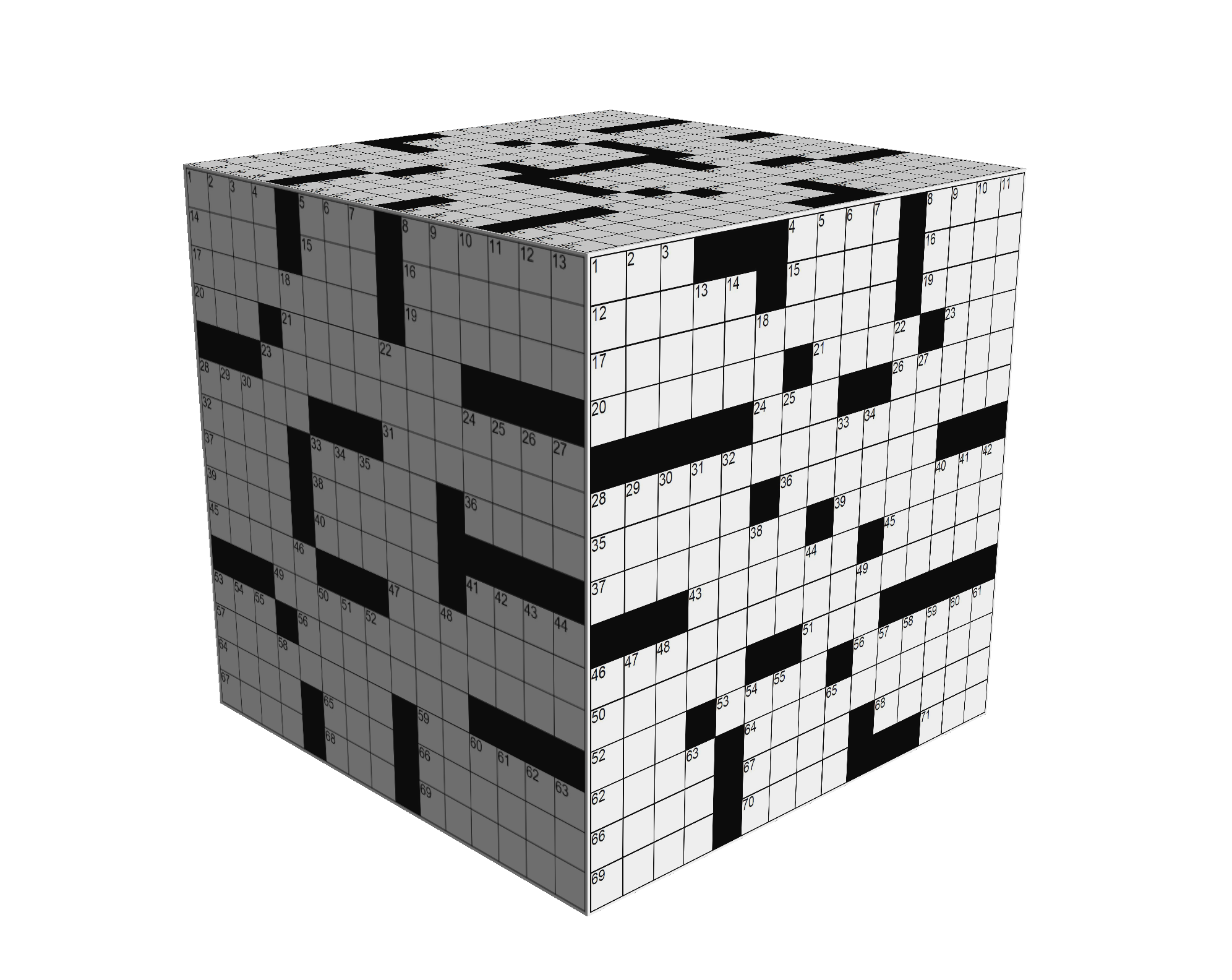
Tips for solving meta crosswords
1. Before you start one of the Pandora’s Blocks puzzles, familiarize yourself with the conventions of standard American-style crosswords. These conventions include things like rotational symmetry of black blocks, not repeating words/phrases, etc. Knowing these conventions will help you notice when these rules are broken in meta crosswords. Usually, if these conventions are broken, it’s because it's part of the mechanism used to hide the final answer.
2. Once you've got those conventions down, go ahead and solve the grid for the puzzle you had in mind (I recommend starting with a puzzle labeled as “easy”). Once the grid's filled out, I would highly recommend checking out Crossword Fiend and reading a bunch of their old posts that are titled "MGWCC" or "WSJ Contest". These other meta outlets often inspire some aspects of PB puzzles. Reading old solutions will give you a sense of some of the many possibilities for meta mechanisms and answers. Take your time looking through a bunch of these - there’s no equal substitute for simply knowing a bunch of potential past mechanisms that you can search for in a new puzzle.
3. The title of the puzzle is always a hint and reading the prompt (i.e. knowing what you’re looking for) is especially important. Take a moment to read and think carefully about both of those. A well-constructed meta will give the solver an "A-ha!" moment, when the solver realizes how the mechanism works, gets a final answer that matches the prompt, and understands how the title fits into everything.
4. Start searching for the solution in the PB puzzle you’ve chosen. I usually start off by first looking for hidden words or patterns in theme answers. (See step 1 for how to identify theme answers.)
As an example, check out this link (this puzzle makes things a bit more complicated since the hidden answers are anagrammed - usually they’re just normally spelled out - but you get the picture!). It's generally pretty quick and easy to scan the theme entries for hidden words, and if you find 2 or more that appear closely related, you know you're on the right track.
Oh, and one more note about theme entries - The last across entry is sometimes used as a “mini” theme entry in metapuzzles. Although it’s shorter than the rest of the theme entries, sometimes it will point you in the right direction.
5. If I’m still stumped, the next thing I often do is check for broken conventions. (Again, see step 1 for how to identify “broken conventions”.) Check out this puzzle where "APE" and "MAN" each appeared 4 times in the puzzle. That's pretty unusual, and is a broken convention, and lo and behold, that was part of the answer mechanism.
6. Next, always read the clues thoroughly. One or more clues might reference the puzzle as a whole or include other information to let you know what to focus on. For example, check out the clue at 75-Across for this puzzle and how it hinted at the answer. (I told you the last across answer can sometimes be important!)
7. If all else fails, look for really awful fill. This can be especially helpful if you’re a constructor yourself. Look for words that would not have been your first choice (obscure proper nouns, weird abbreviations, etc.) and then ask yourself what other words might have forced the constructor to include the subpar entries. Focusing on those words might give you a tip.
8. If you’re looking for more tips, there’s a page on the Xword Muggles Forum where regular meta solvers have posted their advice. Check it out here.
9. Lastly, the lead developer at Crosshare, Mike, has made a quick tutorial for solving metas, and offers some tips of his own on this page.
Happy solving!

